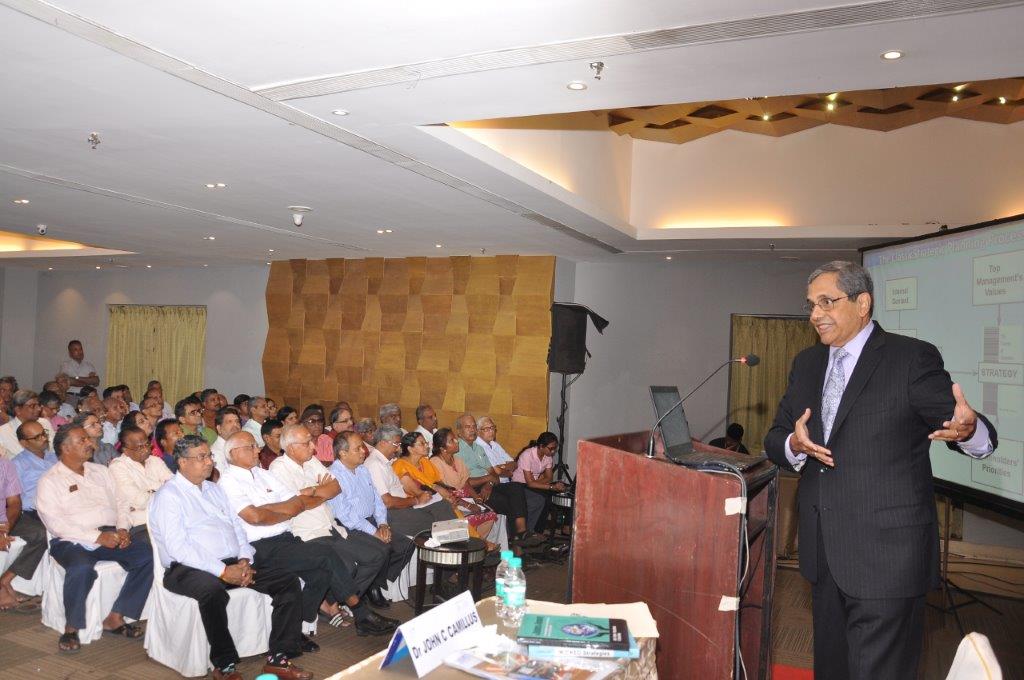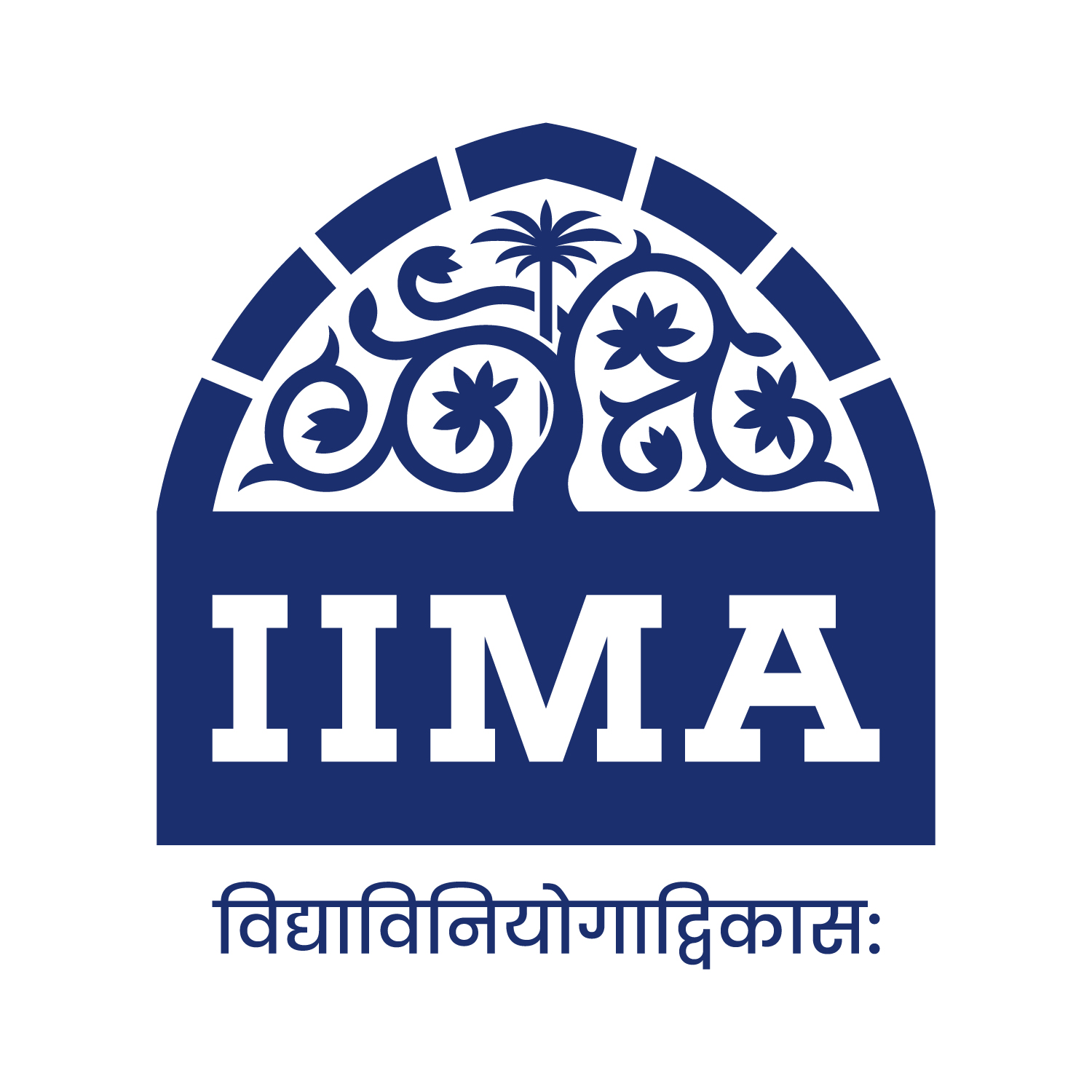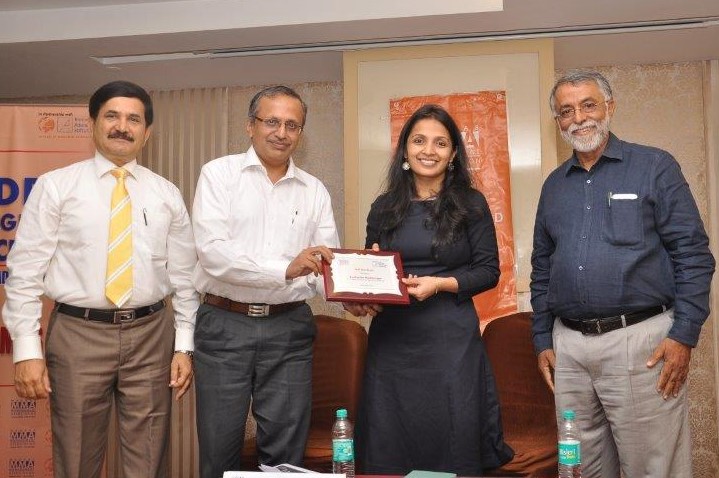Chennai Chapter : Wicked Strategies: How Companies Conquer Complexity and Confound Competitors

KC John [FPM1988] and Ram Srinivasan [PGP1999]
Dr. John C. Camillus [PGP1968 Gold Medalist], Donald R. Beall Professor of Strategic Management, Katz Graduate School of Business, University of Pittsburgh talked on ‘Wicked Strategies: How Companies Conquer Complexity and Confound Competitors’ on Thursday the 16th November 2018 at Hotel Regenta Central Deccan, Chennai at 6:00 PM. About 100 plus alumni from IIMA, IITM and Madras Management Association [MMA] Members attended the event. The Chennai Chapter co-hosted the event with the MMA.
John Camillus earned his DBA from Harvard University. He taught at the IIMA as Professor of Management between November 1971 and December 1976. He has been with the University of Pittsburgh since January 1977. He received the Distinguished Alumnus Award from the IIMA in 2011, and the Inaugural Katz Diversity and Global Leadership Award in 2015.
John Camillus has received numerous awards in recognition of teaching excellence, including the Best Teacher Award at the IIMA and the University-wide Chancellor’s Distinguished Teaching Award at the University of Pittsburgh. His research interest include: Wicked Problems in Strategic Management, the Business of Humanity® and Strategic Planning and Management Control – Processes and Systems. He has served as a consultant to over 100 organizations, including Fortune 500 companies, professional service firms, government agencies, and nonprofit organizations.
Key Takeaways:
- What is a wicked problem? Two professors of design and urban planning – Horst Rittel and Melvin Webber, in the early seventies, articulated that there are certain problems that are not amenable to resolution by traditional, accepted problem-solving techniques. They evocatively labeled these problems as “wicked” and identified ten distinguishing characteristics. Ten characteristics are difficult to remember. These can be whittled down to just five to determine if you are facing a wicked problem.
-
-
- Is the problem one that is substantially without precedent, something that you have not encountered before?
-
- Are there multiple significant stakeholders with conflicting values and priorities? You need to go beyond the traditional big three stakeholders – employees, customers and shareholders. Non-government organizations, multiple layers of government, creditors, communities in which you are located, political parties in power and out of power are all becoming more significant and demanding.
- Are there several causes and are they interactive and tangled? For instance, the future of social media is driven by a complex brew of technology advancements in hardware and apps, changing demographics, evolving social and cultural mores, government regulations, privacy expectations, geopolitical developments, educational practices, disposable income, and economic and social mobility.
- There is no way of knowing you have the right answer. In other words, there is no stopping rule – you can continue searching indefinitely for a “better” answer, and
- The understanding of what the “problem” is changes depending on the “solution” being considered. Another way of phrasing this is that the problem and the solution are interactive. For example, entry into a country that does not permit foreign multi-brand retailers might be accomplished by creating a cash-and-carry model for small retailers or by being a minority partner with a local retailer or by entering an entirely new business employing a distinctive competency such as logistics. Each of these responses to the wicked problem of accessing the huge purchasing power of emerging economies’ populations creates a wholly different set of issues.
- In the public policy arena, the wickedness of problems is hard to overlook. Problems such as refugee policy, violence against women, religious fundamentalism, public education and public health are overtly wicked. In the business world, however, the thing about the wicked problems is that though they can show up anywhere, they are likely to be perceived as “tame” problems. Wicked problems are certainly more common than most managers realize. Not recognizing that they were facing wicked problems led to the dissolution of Westinghouse, the demise of Polaroid, and the decline of Kodak, RadioShack and Atari. Though wicked problems can occur anywhere, it is more likely than not that you will encounter wicked problems if you are a public company, operate globally, and are in a technology-driven business.
- Megaforces that are challenging business. The three forces that are widely experienced and in concert are a major source of wicked problems are: the inevitability of globalization, the imperative of innovation, and the importance of shared value. The first two forces are well understood. Shared value, first articulated by Michael Porter, is the notion that social benefit and economic value are synergistic. It also raises the issue of the appropriate sharing of value across diverse stakeholders.
- The interactions of these three forces create strategic challenges that combine to create wicked problems. For instance, innovating to meet the needs of unserved, low-income customers across the world results in disruptive technologies – Clayton Christensen, the guru of disruptive innovation affirmed that these can upend industries. Innovation also creates changes that differentially impact stakeholders, creating the likelihood of conflict between stakeholders as the organization transforms. The extreme complexity and uncertainty embodied in the global economy coupled with the conflicting priorities of multiple stakeholders creates unknowable futures. This roiling cauldron of disruptive technologies, conflicted stakeholders and unknowable futures is what spawns wicked problems.
- Three Mega-Forces and their Strategic Challenge. These three forces can interact to create wicked problems in any context. There are business contexts or “industries” that will be breeding grounds for wicked problems. Health, software, information technology, fossil fuels, water, automobiles, and public transportation are prime examples. Technological innovation, drastically changing regulations, geopolitical developments, and changing notions of social responsibility make these industries particularly prone to encountering wicked problem that demand that firms develop and deploy wicked strategies.
- How do you help business leaders understand and deal with increasing uncertainty? The very first thing to do is to alert business leaders to the often overlooked reality that there are very different types of uncertainty. Most of us think of uncertainty as volatility; the inability to precisely identify the value of a variable – such as sales, profits, exchange rates and GDP – in the future. But there are other types of uncertainty like the possibility of multiple alternative futures and chaotic ambiguity where the techniques that are used to better forecast the future value of a variable are totally useless.
- Grappling with these very different kinds of uncertainty requires special techniques such as generating possibility scenarios, identifying robust actions, employing a real options approach, visioning and related enablers. These along with Feed-Forward Framework can generate wicked strategies that can help us tame wicked problems. Resolving a wicked problem is an ongoing process. It requires a management system that generates, supports and implements “wicked strategies”.
- What is the Feed-Forward Framework for Developing Wicked Strategies? The first component of the Feed-Forward Framework is the organization’s “identity”, which defines what is core, enduring and distinctive about the organization. It is comprised of the core values, the enduring aspirations, and the distinctive competencies of the organization. Values serve as the anchor that ensures the necessary consistency in decisions in a world where products are transient, markets are ephemeral and technology is dynamic. Aspirations serve as the beacon toward which the organization progresses, and its distinctive competencies offer the compass and roadmap that guides the organization’s decision-making.
- The second component is a “modular organizational structure” that motivates and embraces transformation, while at the same time enables a fierce focus on the continued competitiveness of existing businesses. New ventures and existing businesses are managed with equal fervor by employing a combination of skunk works and conventional strategic business units. The corporate headquarters focuses intensely on human talents and competency development.
- The third component consists of “management processes and systems” that emphasize feed-forward at least as much, if not to a greater extent than, feedback. Visioning, transformational scenarios, possibility scenarios, robust actions that work in multiple scenarios, and a real options mindset are all elements of this third component.
- Taken together, the Feed-Forward Framework creates and deploys wicked strategies that transmute the challenges of disruptive technologies, conflicted stakeholders and unknowable futures into innovative business models, co-creation of value and desired futures.
- Converting Strategic Challenges to Strategic Advantage. Arvind, headquartered in Ahmedabad started out as textile manufacturer. This amazing company chose to address the wicked problem of suppliers – marginal cotton farmers in non-irrigated lands committing suicide because of the failure of the life-giving monsoon rains. Employing the Feed-Forward Framework, Arvind succeeded in eliminating farmers committing suicide in the area on which they focused, improved the environmental situation and soil conditions, engaged corporate partners and the government in their endeavors, became the leading and profitable producers of organic cotton denim in the world, became the preferred fabric supplier to global companies that emphasize sustainability, and developed a new agribusiness profit center growing food crops. Arvind reframed the dire threats as opportunities.
- Can wicked strategies give rise to a sustained competitive advantage over rivals? The Feed-Forward Framework requires and supports a constantly growing array of inter-related competencies. New competencies are new sources of competitive advantage, and when they are synergistically linked with existing competencies, they contribute exponentially to the organization’s ability to compete. The best example of a well-known company exemplifying this approach to sustained competitive advantage is General Electric. The company constantly develops synergistic new competencies that are motivated by the leadership team. Developing human capital has been the focus of top management for decades. The leadership team has chosen to address the needs of emerging markets in a conscious attempt to generate reverse innovation. Vijay Govindarajan explains the process of developing products and technologies in emerging economies and then taking them to the developed markets as the process of reverse innovation. Reverse innovation and embracing disruptive technologies have paved the way for reimagining GE.
For a deep dive into the Feed-Forward Framework to develop wicked strategies, please get hold of: John C. Camillus [2016]. Wicked Strategies: How Companies Conquer Complexity and Confound Competitors. Rotman-UTP Publishing, University of Toronto Press. ISBN 978-1-4426-5055-8.




Sorry, the comment form is closed at this time.